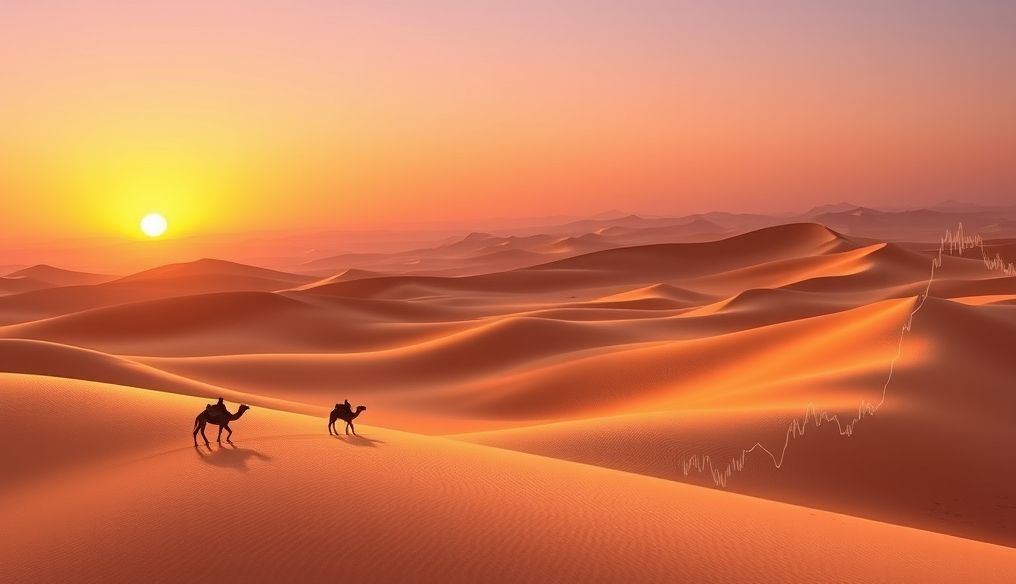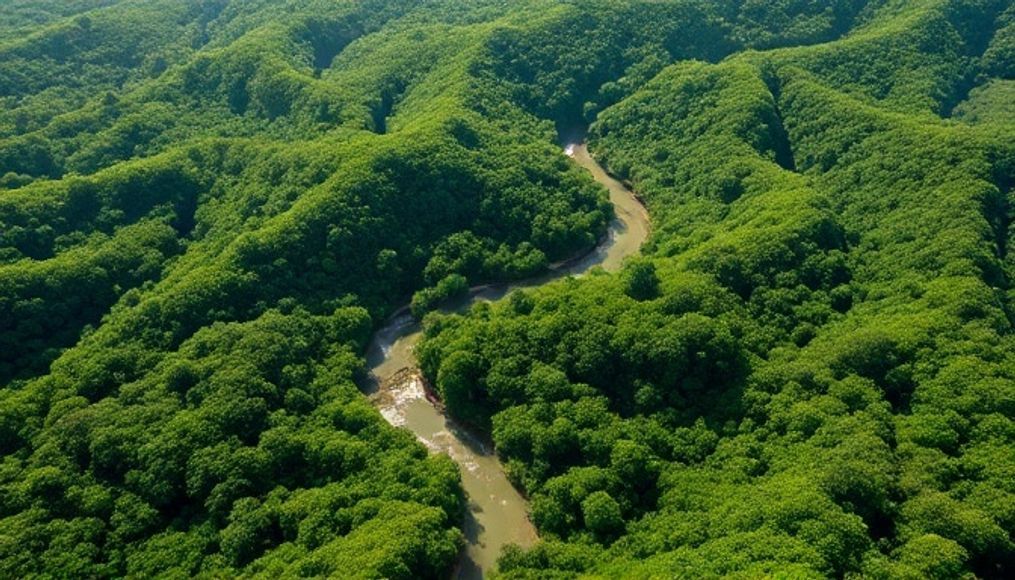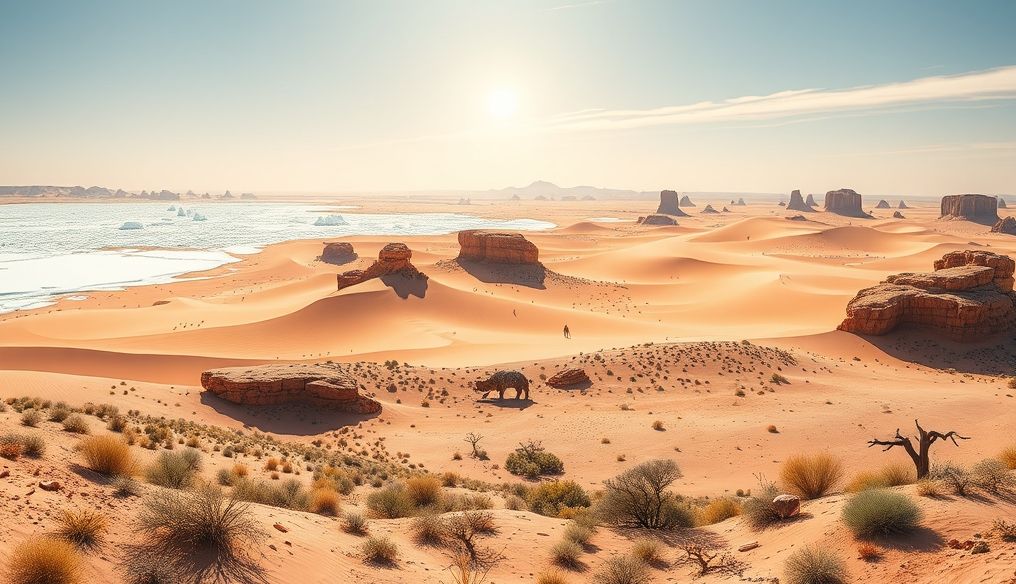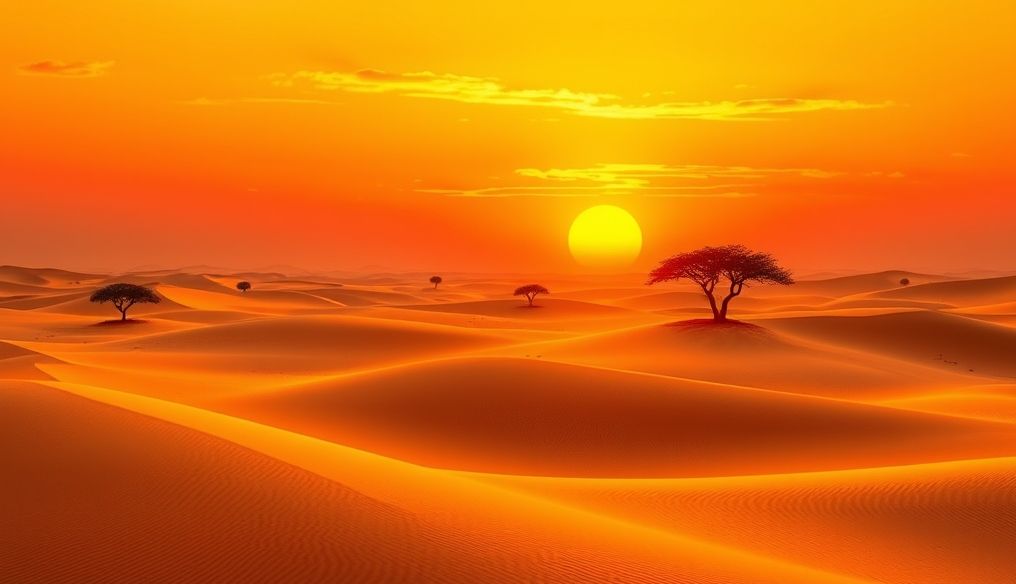What are the largest deserts in the world and what distinguishes them?
Deserts are not just barren expanses of sand; they are complex and diverse ecosystems. Deserts vary in size, climate, and terrain, and they are home to many different types of plants and animals that have adapted to survive in these harsh conditions.
1. Sahara Desert: The Largest Hot Desert in the World
The Sahara Desert is the largest hot desert in the world, covering most of North Africa. It spans across 11 countries and features diverse terrain, including vast sand dunes, rocky plains, and rugged mountains.
- Area: Approximately 9.2 million square kilometers.
- Climate: Hot and dry, with significant temperature variations between day and night.
- Wildlife: Includes camels, desert foxes, scorpions, and lizards.
- Cultural Significance: The Sahara Desert has been an important trade route throughout history and contains many important archaeological sites.
2. Antarctic Polar Desert: The Largest Desert Overall
Although covered in ice, Antarctica is considered a desert due to its low precipitation. It is the largest desert in the world in terms of total area.
- Area: Approximately 14 million square kilometers.
- Climate: Extremely cold and dry, with the lowest recorded temperatures on Earth.
- Wildlife: Includes penguins, seals, whales, and some seabirds.
- Scientific Significance: Antarctica is an important site for scientific research, helping to understand climate change and Earth's history.
3. Arabian Desert: Golden Sands and Ancient History
The Arabian Desert stretches across most of the Arabian Peninsula and is characterized by vast sand dunes, dry valleys, and rugged mountains. It is home to many Bedouin tribes who have adapted to life in the desert.
- Area: Approximately 2.33 million square kilometers.
- Climate: Hot and dry, with significant temperature variations between day and night.
- Wildlife: Includes camels, wolves, desert foxes, scorpions, and lizards.
- Economic Significance: The Arabian Desert contains significant reserves of oil and natural gas.
4. Gobi Desert: Contrasting Climates
The Gobi Desert is located in northern China and southern Mongolia and features diverse terrain, including sand dunes, rocky plains, and rugged mountains. It is a cold desert, with temperatures dropping below freezing in winter.
- Area: Approximately 1.3 million square kilometers.
- Climate: Cold and dry, with significant temperature variations between seasons.
- Wildlife: Includes Bactrian camels, gazelles, wolves, and eagles.
- Historical Significance: The Gobi Desert was part of the ancient Silk Road.
5. Kalahari Desert: Life Flourishes in Aridity
The Kalahari Desert is located in southern Africa, stretching across Botswana, Namibia, and South Africa. Unlike other deserts, the Kalahari Desert receives a significant amount of rainfall, allowing for a diverse range of plants and animals.
- Area: Approximately 900,000 square kilometers.
- Climate: Semi-arid, with significant temperature variations between day and night.
- Wildlife: Includes lions, cheetahs, giraffes, zebras, and many bird species.
- Cultural Significance: It is home to the Bushmen people, who are one of the oldest peoples in Africa.
6. Patagonian Desert: Southern Splendor
The Patagonian Desert is located in Argentina and Chile and is the largest desert in South America. It features a cold and dry climate, and diverse terrain including rocky plains and rugged mountains.
- Area: Approximately 673,000 square kilometers.
- Climate: Cold and dry, with strong winds.
- Wildlife: Includes guanacos, pumas, armadillos, and many bird species.
- Tourist Significance: Known for its stunning natural beauty, attracting tourists from all over the world.
7. Great Victoria Desert: The Heart of Australia
The Great Victoria Desert is located in Western Australia and South Australia and is the largest desert in Australia. It is characterized by vast sand dunes, rocky plains, and rugged mountains.
- Area: Approximately 647,000 square kilometers.
- Climate: Hot and dry, with significant temperature variations between day and night.
- Wildlife: Includes kangaroos, wallabies, snakes, and lizards.
- Cultural Significance: It is home to many indigenous communities who have lived in the desert for thousands of years.
8. Colorado Plateau: A Diverse American Desert
The Colorado Plateau covers parts of various US states. This desert differs from other deserts in that it receives significant rainfall during the winter due to its geographical location.
- Area: Approximately 360,000 square kilometers.
- Climate: Hot and dry in the summer, mild and humid in the winter.
- Wildlife: Includes diverse animals such as snakes, birds, and reptiles.
- Tourist Significance: Contains many attractive natural landmarks.
9. Syrian Desert: History and Civilization
The Syrian Desert stretches across parts of Syria, Jordan, Iraq, and Saudi Arabia. It is characterized by diverse terrain, including rocky plains and dry valleys.
- Area: Approximately 500,000 square kilometers.
- Climate: Hot and dry, with significant temperature variations between day and night.
- Wildlife: Includes desert foxes, hares, and migratory birds.
- Historical Significance: The Syrian Desert has been an important trade route throughout history and contains many important archaeological sites.
10. Chihuahuan Desert: Home of the Cactus
The Chihuahuan Desert is located in Mexico and the United States, and is known for its rich biodiversity, especially the different types of cacti.
- Area: Approximately 500,000 square kilometers.
- Climate: Hot and dry, with significant temperature variations between day and night.
- Wildlife: Includes coyotes, jackrabbits, snakes, lizards, and many bird species.
- Environmental Significance: It is home to many rare and endangered species.
In conclusion, deserts are not just barren places, but complex and diverse ecosystems that deserve study and respect. Each desert has its unique characteristics that distinguish it from others, whether in terms of climate, terrain, wildlife, or cultural significance.




